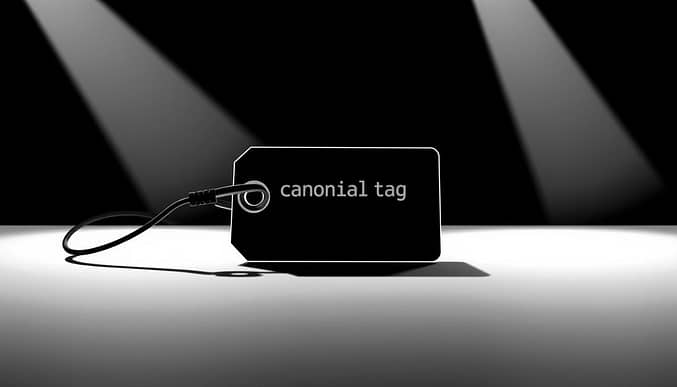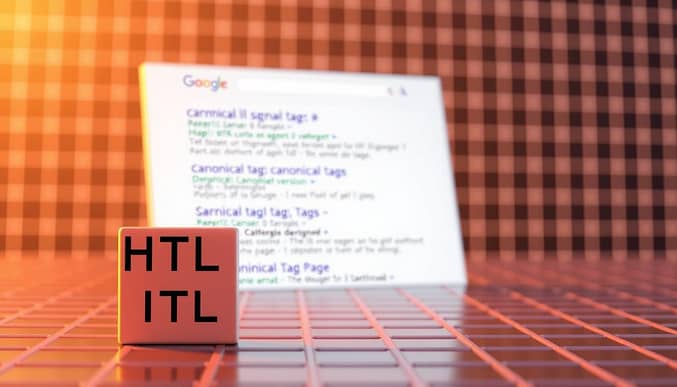What Is a Canonical Tag? SEO Best Practices Explained
Modern websites often face duplicate content challenges, especially with URL variations like HTTP/HTTPS or session IDs. Search engines rely on canonical tags to identify the primary version of a page, streamlining how they index and rank content. According to Google, canonicalization ensures crawlers prioritize the most relevant URL, reducing confusion and preserving SEO equity.
These tags play a critical role in preventing duplicate content penalties. For example, e-commerce sites frequently encounter identical product pages due to filters or tracking parameters. A properly implemented canonical tag directs search engines to treat these duplicates as copies of the main page, consolidating ranking signals.
This guide explores technical best practices for maximizing canonical tag effectiveness. You’ll learn how search algorithms interpret these directives, common implementation errors, and strategies to align URLs with your optimization goals. Designed for website owners, the insights here aim to strengthen organic visibility while avoiding crawl budget waste.
Key Takeaways
- Canonical tags specify the preferred version of duplicate pages for search engines.
- They prevent SEO dilution caused by identical or near-identical content.
- Google uses canonical signals to prioritize indexing and ranking decisions.
- Common use cases include URL parameters, printer-friendly pages, and regional variants.
- Proper implementation requires technical precision to avoid conflicting directives.
- Regular audits ensure canonical tags align with current site architecture and goals.
Introduction to Canonical Tags
Handling duplicate pages efficiently remains a critical task for SEO professionals. Identical or near-matching URLs dilute ranking signals and confuse search algorithms. Properly guiding crawlers to prioritize the right version ensures your best content gets visibility.

Overview of Canonicalization
Canonicalization helps search engines identify the primary canonical url among duplicates. This process consolidates ranking power and prevents split traffic. Common triggers include:
- HTTP vs HTTPS protocol variations
- www and non-www URL formats
- Mobile/desktop page versions
Google’s documentation states: “Canonical signals help us group duplicate URLs into clusters and select the best representative.” Proper implementation requires aligning technical signals like redirects, sitemap entries, and internal links.
Why Duplicate Content Matters
Multiple URL versions create three key problems:
| Issue | Impact | Solution |
|---|---|---|
| Split rankings | Competing pages lower positions | Self-referencing canonical tags |
| Crawl budget waste | Bots index duplicates instead of new content | Consistent sitemap entries |
| User confusion | Visitors land on inferior versions | 301 redirects for legacy URLs |
E-commerce sites often face these challenges with product filter URLs. Addressing duplicate content issues improves crawl efficiency and strengthens search results performance. Implementing canonical tags correctly preserves SEO equity across all page variations.
What Is a Canonical Tag?
Digital marketers rely on technical solutions to address content duplication challenges. A canonical tag serves as an HTML directive that tells search engines which version of a page should be prioritized for indexing. This prevents identical or similar content from competing in search results.

Definition and Key Elements
The canonical tag appears as code within a webpage’s <head> section. Here’s the standard format:
<link rel="canonical" href="https://example.com/primary-page/" />
Three components define this code’s effectiveness:
- Rel attribute: Signals the relationship between pages
- Href value: Specifies the full URL of the preferred page
- Placement: Must appear in the <head> section to be recognized
Self-referencing canonicals—where a page points to itself—are recommended by Google. This practice establishes page authority even when no duplicates exist. As stated in Google Search Central guidelines:
“Specifying a self-referencing canonical helps prevent future duplication issues during site updates.”
Proper implementation consolidates ranking signals. Backlinks pointing to duplicate url versions flow to the canonical page. Always use absolute URLs (https://domain.com/page) instead of relative paths (/page) to avoid misinterpretation.
Technical precision matters. Conflicting directives between canonicals and redirects can undermine SEO efforts. Regular audits ensure your code aligns with current site architecture and search engine requirements.
Understanding Canonicalization in SEO
Search algorithms face countless duplicates daily. To streamline indexing, they analyze technical signals to identify the strongest canonical URLs. This selection process determines which version ranks, impacting visibility and traffic distribution.
How Search Engines Choose Canonicals
Search engines prioritize URLs with HTTPS protocols, consistent sitemap listings, and 301 redirects. Google’s crawlers also weigh internal links pointing to specific pages. For example, a product page with more internal navigation clicks often becomes the canonical choice over parameter-heavy duplicates.
John Mueller of Google notes:
“We follow clear hierarchies—secure protocols and centralized linking patterns guide our canonical decisions.”
Signals Influencing Canonicalization
Key ranking factors include:
- HTTPS preference: Secure pages outrank HTTP counterparts
- Redirect chains: Permanent redirects pass authority to target URLs
- Sitemap inclusion: Listed pages gain priority
E-commerce sites using multiple version pages (like color variants) must align these signals. Mismatched directives confuse crawlers, splitting link equity between duplicates.
Impact on Crawl Budget and Content Performance
Improper canonicalization wastes crawl budget. Bots revisit duplicate pages instead of discovering new content. A travel blog with 10 regional hotel guides saw a 40% traffic drop due to competing canonicals. Fixing this consolidated rankings into three primary URLs.
| Issue | Result | Solution |
|---|---|---|
| Split canonicals | Lower SERP positions | Search Console audits |
| Mixed signals | Crawl inefficiency | Consistent sitemap entries |
Use Google Search Console to monitor canonical status. The “Coverage” report highlights pages competing for the same search results.
Implementing Canonical Tags Effectively
Strategic implementation ensures search engines recognize your preferred page versions. Choosing between manual coding and automated tools depends on technical expertise and platform constraints.
Manual vs Automated Implementation
Manual coding offers precise control. Insert the canonical tag directly into HTML headers using absolute URLs:
<link rel="canonical" href="https://yoursite.com/primary-page" />
Pros include customization for complex sites. Cons involve time investment and human error risks.
Automated plugins simplify the process. Yoast SEO for WordPress auto-generates tags based on permalinks. Shopify users edit theme.liquid files, while Magento’s admin panel includes canonical settings under Catalog > Products.
Platform-Specific Guidelines
- WordPress: Yoast or Rank Math plugins handle canonicals in metadata settings. Verify URLs in page editors.
- Shopify: Edit theme code or use SEO Manager apps. Ensure HTTPS protocols in href values.
- Magento: Enable canonical tags via Stores > Configuration > Catalog > SEO.
Avoid duplicate declarations by auditing plugins and theme files. Conflicting code often arises when multiple SEO tools run simultaneously. For troubleshooting, check Google Search Console’s indexing reports to identify misconfigured tags.
Resolving Common Canonical Issues
Technical SEO challenges often stem from overlooked canonical configurations. Redirect chains, mismatched tags, and inconsistent internal links create confusion for crawlers. These issues lead to indexing conflicts, where search engines struggle to identify the correct canonical version of your content.
Identifying Duplicate Content Problems
Mismanaged URL parameters frequently generate unintended duplicate pages. An e-commerce site recently faced a 30% traffic drop after product filters created 200+ near-identical versions. Tools like Screaming Frog and Google Search Console’s Coverage Report exposed conflicting canonical tags across variants.
| Issue | Diagnosis | Fix |
|---|---|---|
| AMP missing canonicals | Mobile pages not linking to desktop | Add rel=canonical in AMP headers |
| Parameter-heavy URLs | Session IDs creating duplicates | Use robots.txt to block crawlers |
| Sitemap conflicts | Non-canonical URLs in sitemap | Update sitemap with preferred versions |
Troubleshooting Redirect Chains and Technical Errors
Redirect loops waste crawl budget and dilute authority. A news publisher discovered a 5-hop redirect chain causing their article pages to lose rankings. As stated in a case study on common canonical errors, resolving this required:
“Mapping all redirect endpoints to a single canonical URL and updating internal navigation links.”
Three critical steps for sustainable fixes:
- Audit redirects using tools like Sitebulb
- Consolidate internal links to point to primary URLs
- Validate fixes through Search Console’s URL Inspection tool
Regularly review canonical configurations during site migrations or CMS updates. Proactive monitoring prevents content issues from undermining hard-earned rankings.
Future Trends and Best Practices in Canonicalization
Search engine optimization evolves rapidly, requiring adaptive strategies for managing duplicate content. Emerging technologies and shifting user behaviors demand smarter approaches to canonicalization. Staying ahead means anticipating how search algorithms interpret canonical URLs in dynamic environments.
Evolving SEO Practices and Algorithm Updates
Google’s mobile-first indexing prioritizes responsive design, making unified version pages critical. A 2024 Semrush study found 68% of crawled duplicates stem from unoptimized mobile/desktop splits. John Mueller recently emphasized:
“Future updates will reward sites with airtight canonicalization across devices and regional variants.”
Three trends shaping canonical strategies:
- AI-driven content clustering replacing manual tagging
- Increased emphasis on cross-platform URL consistency
- Stricter penalties for canonical chain errors
Preparing Your Site for Future Changes
Proactive audits using tools like Ahrefs’ Site Audit identify conflicting directives. For complex websites, implement dynamic canonical tags that auto-update during CMS migrations. Follow Google’s updated guidelines to consolidate duplicate URLs through:
- Parameter handling in Search Console
- Structured data alignment
- Server-level canonical signals
An enterprise SaaS platform improved organic traffic by 22% after adopting version-controlled canonical mappings. Regular reviews of content clusters and redirect maps ensure sustained visibility as search behaviors shift.
Conclusion
Effective SEO management requires strategic handling of duplicate pages to maintain search visibility. Canonical tags serve as essential directives, guiding crawlers to prioritize your preferred URL versions. Proper implementation consolidates ranking power and resolves content issues caused by identical or similar pages.
Key practices include using absolute URLs in code, aligning internal links, and conducting regular audits with tools like Google Search Console. Platforms like WordPress and Shopify offer built-in solutions, but manual checks prevent conflicts between plugins and theme files.
Prioritize troubleshooting mismatched tags and redirect chains that split SEO equity. Google’s guidelines emphasize self-referencing canonicals and HTTPS consistency to avoid crawl budget waste. A recent case study showed sites resolving these errors achieved 22% higher organic traffic within three months.
Take action today: audit your site’s canonical configurations using Screaming Frog or Ahrefs. Update sitemaps, fix broken links, and validate changes through indexing reports. Consistent maintenance ensures your pages rank higher while delivering seamless user experiences.